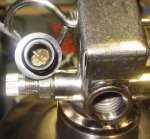Good stuff Overland. :sombrero:
Henry, I don't advocate anybody put out a "car fire" they happen on.
The ax has a pointed end, a claw hammer would work too. Might be a bad idea, but the 2 car fires I watched the cable must have melted as they could not get the hood latch to release.
Were leaving in a couple weeks and just wanted to be more preparded.
Maybe later will look into the underhood mounted system.
Overland list
(lesson #1 - have a standardized load plan and know where things are)
(lesson #2 - always have heavy gloves handy for fire response - you'll never react fast enough to a vehicle fire for bare
hands).
(lesson #3 - the only way to douse an engine compartment fire is to get the hood open. That is where the oil and fuel lines
are, and the ignition sources are. Once rubber lines start burning, liquid fuel sources pool on the top of the
engine, and extinguishers can never put out those fires from below).
(lesson #4 - mechanical oil pressure gauges suck)
(lesson #5 - finish that bug-out bag and keep it handy near a door!)
Edit: cut and paste from a
fire site
The Patented Fyrestick, is the world's leading piercing nozzle. Firefighters use it to punch through a wall, ceiling or car hood and then introduce a mist of water into an enclosed space. When the spray hits the superheated space, it is instantly converted into steam, depriving the fire of oxygen, dramatically lowering the temperature and forcing water into every inch of space.


